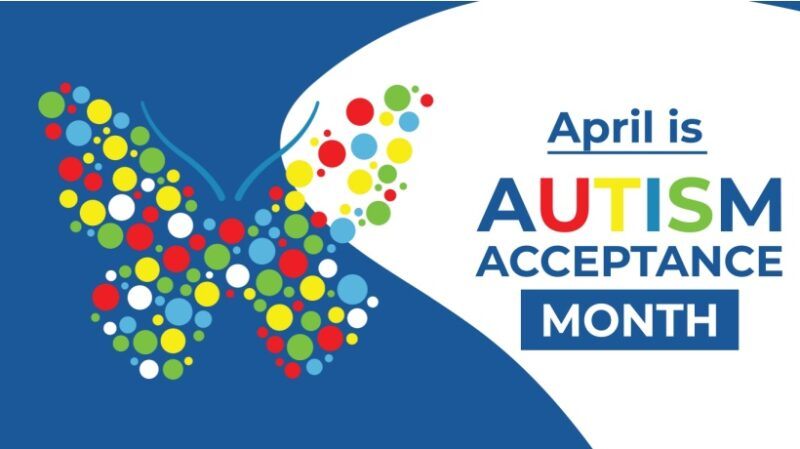
Autism Acceptance Month 2025: Tips To Create Autism-Inclusive Learning Environments
In recent years, there has been a significant shift in the field of education that is becoming increasingly evident. Learning is becoming more inclusive, adapting to the needs of students instead of forcing them to conform to traditional classroom settings. As a result, the practice of isolating students with learning or other disabilities into separate groups is becoming less common. Instead, educators and institutions are taking the necessary steps to make the classroom a welcoming space for everyone, despite their differences. This change is also reflected in the fact that International Autism Awareness Month has been renamed to International Autism Acceptance Month. In honor of this occasion, let’s explore 6 ways you can transform your classroom—online or in-person—into an autism-inclusive learning environment.
Tips To Foster An Inclusive Learning Environment For Learners With Autism
1. Provide Development And Training Opportunities To Teachers
The first step to creating an inclusive and accepting learning environment for learners with autism is gaining a deep understanding of the topic. Instructors must receive training on neurodiversity and how it can manifest, as well as different teaching strategies designed to accommodate learners’ needs. Start with allowing instructors, teachers, and administrative staff to share their opinions on how they can integrate and support learners with autism. By identifying their current views and biases, you can guide them to the right resources to help them make the most meaningful changes in their classroom and provide high-quality learning.
2. Identify The Inclusivity Needs Of Your Classroom
The learning requirements of students on the spectrum can vary greatly. As a result, teachers must identify what an inclusive classroom must look like based on their learners’ specific needs instead of blindly following what other instructors do. For example, it is often advisable to provide visual aids, but some students may also benefit from flexible seating options, such as stand-up desks or bean-bag chairs. In online learning environments, integrating assistive technology may also be necessary to guarantee everyone can participate and keep up equally.
3. Provide Structured Learning
Having structure in the classroom is beneficial for all students, particularly those with autism. Knowing what to expect when they enter the classroom or what the last activity will be before class ends can be comforting for learners with autism and make the learning experience more enjoyable. One way to implement this strategy is to create a visual schedule, namely a board with pictures and simple words that represent the sequence of activities for each class. Visual cues, in the form of pictures or gestures, are a valuable tool for creating autism-inclusive learning environments, limiting the number of spoken words, and enhancing learner comprehension and motivation.
4. Simplify Your Language
Depending on the age of the learners with autism in your classroom, their auditory processing may not be fully developed, making it difficult for them to comprehend complex language. Therefore, until you identify the language level of each child, it is best to communicate as simply as possible. Give clear and direct instructions, and use keywords for upcoming activities or tasks that you want learners to complete. Over time, you can work on helping students increase their language capabilities so that you can diversify the way you communicate with them. Finally, it is important to remember that abstract or metaphorical language is not preferred in inclusive classrooms, as it can lead to confusion and misunderstanding.
5. Prevent Sensory Overload
Traditional classrooms can often be challenging for people with autism. Bright lights, noise from pages flipping, pencils being sharpened, whispered conversations, the teacher’s voice, etc., can be overwhelming. When creating an autism-inclusive learning environment, you must ensure that such environmental factors will not hinder the progress of learners with autism. To prevent sensory overload, you can use light dimmers, allow learners to wear noise-reduction earplugs, change seating arrangements to minimize distractions, use odor-free markers, and avoid using overcomplicated visuals. By taking these things into consideration, you can maintain a calm and focused atmosphere, ultimately maximizing learning outcomes for students with autism.
6. Continuously Adapt And Improve
The final step in transforming a traditional classroom into an autism-inclusive space is to be flexible. The needs of your students, as well as recommended strategies and techniques, may change with time, and teachers and instructors must be prepared to adapt when needed. To assess the effectiveness of your inclusive classroom, it is best to regularly gather feedback from students, family, and fellow educators. Additionally, you must closely monitor how students react to new methods or how their progress changes over time. This way, you will have the necessary data and information to make impactful decisions for your learning strategy.
Conclusion
Autism-inclusive classrooms can be great learning environments for students with and without autism, offering ample opportunities to improve their emotional intelligence and social skills and achieve the best learning outcomes. Although teachers and educational institutions may think that inclusive classrooms are not that easy to achieve, all it takes is keeping an open mind and implementing strategies that will improve the learning environment for all students without exceptions. As we celebrate this year’s Autism Acceptance Month, make sure to devote some time to learners with autism and implement the tips we shared in this article, as well as others, to support their learning and development.